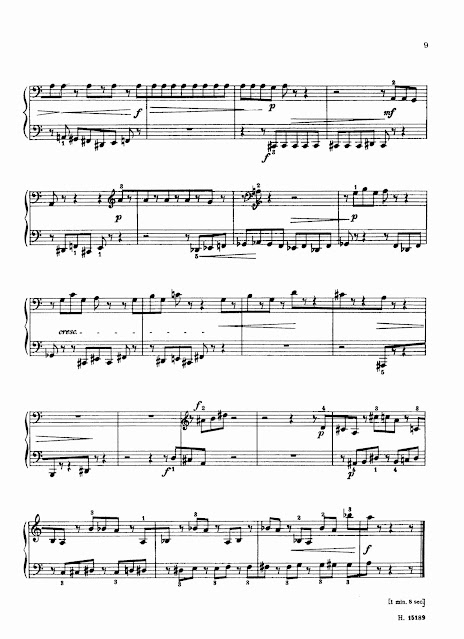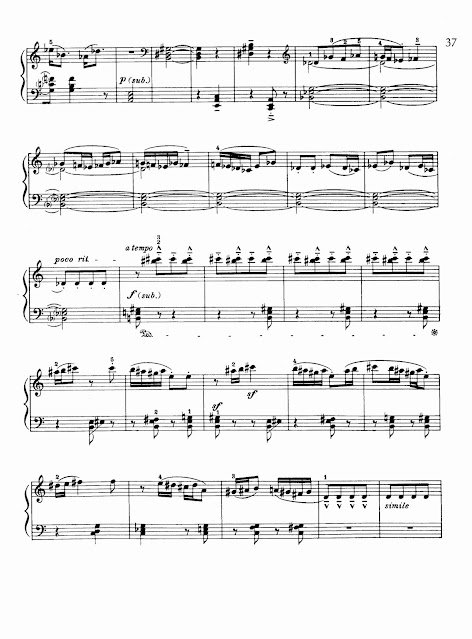CCCXXXIX. BARTÓK, Béla (1881-1945)
Mikrokosmos (1926-39)
Chris Breemer, piano
(2:34:28)
Chris has helpfully provided time links to all 153 pieces!
**
Volume One
#1-2:
#1-2:
#15-16:
Note how the hand positions are helpfully notated above ...
Teaching modes:
Volume Two
#51:
Introducing distant key sigs, distinct left- and right-hand parts, and beautiful music:
#59:
Introducing bitonality:
Volume Three
#70:
Learning to coordinate hands, and play a melody against double notes:
#79:
A lovely "homage" to Bach, but with happy dissonance you won't find in the Inventions, for example ...
#96:
Lots of fingering to learn:
Volume Four
#104:
Key changes:
#107:
Beautiful cluster chords -- *
Beautiful cluster chords -- *
* Chris makes a slight mistake in bar 30 ...
#113:
#115:
Not to mention five!
Not to mention five!
#124:
A nice exercise in playing staccato, plus phrases in stretto:
#130:
Not sure what the "joke" is, but this introduces quintuplet rhythm and some cool thumb clusters.
#134:
Valuable study in playing double notes with constantly changing fingering:
#139:
Andrew is definitely "merry." The 3-4 / 2-4 fingering (bars 22-23, et seq.) will definitely help you when you dig into some Mozart ...
Volume Six
#141:
"Subject and Reflection." Playing moving figures while holding down a note; lots of tempo changes; nice dissonances:
#146:
#151:
An unusual time signature: 3+2+3/8. The math comes out to 8/8 or 4/4 or 2/2 time. Why not write it in 4/4?
Because throughout the piece, the rhythm is 3+2+3 -- not 2+2+2+2, as might be expected in a normal 4/4 meter.
Because throughout the piece, the rhythm is 3+2+3 -- not 2+2+2+2, as might be expected in a normal 4/4 meter.
Bartók frequently wrote music in these type of meters:














































No comments:
Post a Comment